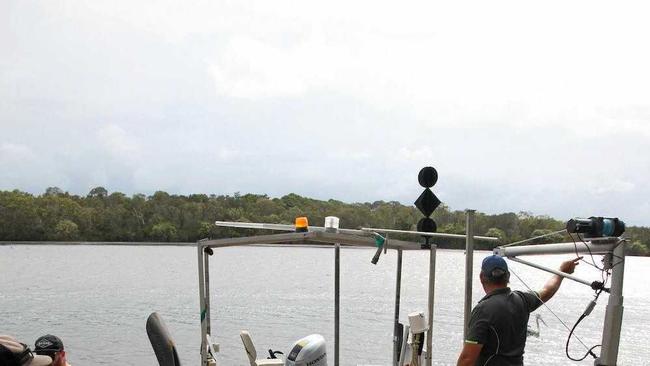No vacancy in fish hotels
Bringing back the fish with oyster reefs

Noosa
Don't miss out on the headlines from Noosa. Followed categories will be added to My News.
FEBRUARY is usually one of Noosa's quieter months for accommodation stays, but 14 "fish hotels” are reporting bumper business as researches scale up efforts to find out what sort of guests are checking in.
According to University of the Sunshine Coast researchers, the fish numbers recorded from underwater monitoring of the Noosa River's oyster reefs as part of the Bring Back the Fish project are abundantly good.
The latest Noosa Oyster Reef Restoration newsletter sent out by Professor Thomas Schlacher reports: "Very exciting is the fact that fish have moved into the fish hotels with amazing early booking rates to report.
"The number of species, individuals etcetera are significantly higher on the reefs when compared with non-reef sites nearby.”
The latest USC graph shows an 80 per cent increase in harvested fish on these reefs, a more than
30 per cent increase in bream, around 30 per cent lift in all species and around 40 per cent improvement in species richness.
And the ecological function rating which looks at natural functions like predation, increased by almost 30 per cent.
A joint initiative of the Noosa Parks Association and the Thomas Foundation, and funded in part by the Noosa Biopshere Reserve Foundation Big Ideas program, Bring Back the Fish aims to increase recreational fish numbers and diversity by offering what is considered prime fish habitats.
There will also be more than 2200 deployments of underwater cameras at
110 sites throughout the Noosa in estuary over the next year.
"This will enable us to understand what impact the reefs have throughout the estuary, for example scaling up, and how frequently and consistently the fish use the new reefs as habitat.
"One of the next steps by the USC team is to investigate whether the position of reefs within the broader landscape may influence how effective they are as fish hotels.
"For example, are reefs closer to sea grass and mangroves better fish habitats?”
One of the tracking devices will be acoustic tags which researchers will monitor through hydrophones.
Prof Schlacher said none of the encouraging data gathered to date would have been possible without "the amazing and unfaltering commitment of all project partners”.
He thanked all who have contributed including the council officers, NPA and Noosa Biosphere Reserve Foundation volunteers and students of the USC and Ecological Service Professionals.


